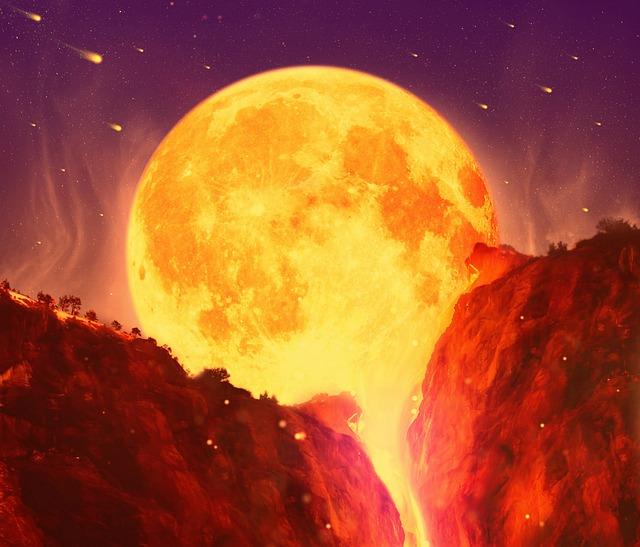Recent social media buzz claimed that comet 3I/ATLAS had exploded and speculated wildly about its nature, with some suggesting it could be an alien spaceship. Experts have now clarified that these rumors are unfounded. In reality, comet 3I/ATLAS remains intact as a natural celestial object, continuing to offer valuable scientific insights without any extraordinary explanations. This article separates fact from fiction surrounding the curious case of 3I/ATLAS.
Comet 3I ATLAS Observations Clarify Misunderstandings About Its Appearance
Recent observations of comet 3I/ATLAS have dispelled several rumors regarding its sudden and dramatic changes in appearance. Contrary to sensational claims circulating online, the comet did not explode or break apart unexpectedly. Instead, astronomers have confirmed that the comet’s varying brightness and fragmented tail are typical for interstellar visitors encountering the intense heat of the inner solar system for the first time. These natural processes cause dust and gas to eject unevenly, creating the illusion of instability without any catastrophic disintegration.
Key clarifications from researchers include:
- The comet’s brightening phases are consistent with sublimation patterns observed in other comets.
- Irregularities in the tail shape are caused by solar wind interactions, not explosive events.
- No evidence supports claims of artificial origin or alien technology associated with 3I/ATLAS.
| Observation | Explanation |
|---|---|
| Brightness Fluctuations | Natural dust and gas release cycles |
| Tail Fragmentation | Solar wind shaping comet’s trail |
| Structural Integrity | Stable nucleus confirmed by imaging |
Expert Analysis Explains Why the Comet Has Not Exploded or Malfunctioned
Leading astronomers emphasize that comet 3I/ATLAS’s observed stability is consistent with natural cometary behavior, dispelling sensational theories about unexpected explosions or alien technology. The comet’s nucleus, composed primarily of ice and dust, undergoes sublimation as it approaches the Sun, releasing gas and debris in a predictable fashion. This process, combined with gravitational forces, explains the comet’s glowing coma and tail without indicating any malfunction or disintegration. Experts underline that the physical properties of 3I/ATLAS closely align with those observed in other interstellar objects, reaffirming its natural origins.
- Thermal tolerance: Despite solar heating, the comet’s structure can withstand temperature fluctuations due to its layered composition.
- Outgassing dynamics: The release of volatile materials is controlled and does not lead to sudden explosive events.
- Orbital stability: Trajectory measurements show consistent gravitational influences without anomalies.
| Aspect | Observation | Implication |
|---|---|---|
| Surface Composition | Ice-rich with dusty layers | Resilient to solar heating |
| Outgassing Rate | Stable, gradual | No signs of explosive disruption |
| Trajectory | Consistent elliptical path | Indicates natural gravitational behavior |
Further dispelling myths, astrophysicists argue that the lack of erratic signals or structural meltdown does not support hypotheses of artificial origin. Instead, 3I/ATLAS provides researchers a rare opportunity to study an object formed outside our solar system, offering insights into the composition and longevity of interstellar visitors. Continued monitoring reinforces confidence in cometary physics models and helps prevent misinformation from gaining traction within public discourse.
How Scientists and Enthusiasts Can Better Interpret Unusual Celestial Events
Interpreting unusual celestial events requires a balance between scientific rigor and open-minded curiosity. Researchers and enthusiasts alike can benefit from consulting verified data sources such as the Minor Planet Center and NASA’s JPL database to confirm observations. When a comet or other celestial body exhibits unexpected behavior, it’s crucial to consider natural explanations-outgassing, fragmentation, or solar radiation pressure-before speculating about extraterrestrial causes. Engaging with expert analyses published in peer-reviewed journals and credible space news outlets also helps contextualize the phenomena without jumping to sensational conclusions.
To foster clearer understanding, communities of amateurs and professionals should emphasize these best practices:
- Cross-Verify Observations: Compare reports from multiple geographic locations and instruments.
- Understand the Science: Familiarize with comet physics, including nucleus composition and typical activity.
- Avoid Amplifying Speculation: Maintain skepticism towards conspiracy theories or sensational claims.
- Use Visual Aids: Employ diagrams or tables to illustrate event timelines or comet behavior patterns.
| Observation Aspect | Scientific Interpretation | Common Misconception |
|---|---|---|
| Sudden Brightness Increase | Outgassing or debris shedding | Alien spacecraft activation |
| Unusual Tail Shape | Solar wind interaction or dust fragmentation | Artificial object maneuvering |
| Fragmentation Events | Structural instability under thermal stress | Sign of extraterrestrial sabotage |
Wrapping Up
In summary, despite some sensational claims, comet 3I/ATLAS remains intact and fully natural-a fascinating visitor from another star system, not an extraterrestrial spacecraft. As scientists continue to study this rare interstellar object, their observations deepen our understanding of the cosmos, reminding us that sometimes the truth is just as intriguing as fiction. Stay tuned to Live Science for the latest updates on comet 3I/ATLAS and other remarkable discoveries beyond our solar system.
